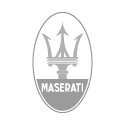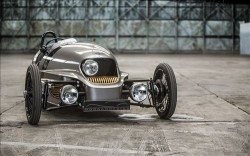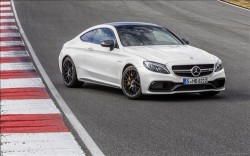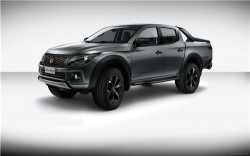Wallpapers
- Collezione Cento
- Gran Turismo
- Maserati GranTursimo MC Concept
- Gran Turismo S (2009)
- Quattropode Sport GT S
 Italian sports-car excitement doesn't have to come at super-steep
prices. Maserati has made a name for itself as a maker of lust-worthy
exotics that, though costly, are bargains relative to their
stratospherically priced competition. Maserati cars currently come in a
number of configurations that range from an open sports car to a
spacious luxury sport sedan.
Italian sports-car excitement doesn't have to come at super-steep
prices. Maserati has made a name for itself as a maker of lust-worthy
exotics that, though costly, are bargains relative to their
stratospherically priced competition. Maserati cars currently come in a
number of configurations that range from an open sports car to a
spacious luxury sport sedan.
The company was founded in 1914 by six Maserati brothers: Carlo, Bindo,
Alfieri, Mario, Ettore and Ernesto. Based in Bologna, Italy, the
brothers were racing enthusiasts and planned to craft racecars for
private use. Mario, an artist, was believed to have based the company's
trident emblem on a statue of the mythological god Neptune found in a
Bologna square.
Throughout the '20s and '30s, the Maserati brothers scored many wins
around the globe in their custom-built racecars. In 1937, the surviving
brothers sold their stake in the company to the Orsi family, who moved
the company's headquarters to Modena. A couple of years later, one of
the automaker's cars won the prestigious Indianapolis 500.
Postwar, Maserati continued to rack up impressive racing victories with
cars like the famous Tipo 60 and 61 "Birdcage" models. The company
didn't start building road cars until the A6 coupe, which was made from
1947-'57. With only 138 cars produced in that long span, most of
Maserati's money came from its other products: spark plugs and car
batteries. The Maserati 3500 GT, fitted with a double-overhead-cam
inline six, debuted in the mid-1950s.
By the 1960s, the automaker had shifted its focus from racecars to road
cars. The company rolled out sexy models like the Mistral Coupe and the
Sebring. But it wasn't until 1966, with the introduction of the sleek
Giugiaro-styled Ghibli, that Maserati fielded a truly powerful
(330-horsepower V8) and sexy Italian sports car. In 1968, the marque
was purchased by CitroŽn.
Throughout the 1970s, Maserati made the most of its partnership with
CitroŽn, using some of that company's suspension and steering
components in Maserati cars such as the V8 Bora and V6 Merak models.
The decade's fuel crisis took its toll, though, wreaking havoc and
killing demand for the sort of gas-guzzling sports cars that were
Maserati's specialty. CitroŽn was driven into bankruptcy and Maserati
was placed in liquidation. In 1975, the company was purchased by
Alejandro de Tomaso, an Argentinean who had a previous life as a
successful racecar driver. He quickly rolled out a new model, the
Quattroporte III, a four-door luxury sedan.
The 1980s were an especially dark time for Maserati. Its main model for
the U.S. market, the Biturbo, was bland and notoriously unreliable. In
1991, the company stopped importing cars into the U.S. completely. Fiat
bought Maserati in 1993 and variants of the Biturbo continued to be
produced until the factory closed in 1997 for a total refurbishing.
During this time, Ferrari bought 50 percent of Maserati; Ferrari went
on to acquire full control of the marque. After the factory's rebirth,
Maserati started production of a pair of world-class cars, the current
two-seat Spyder roadster and the four-seat Coupe. With powerful V8
engines, the availability of an F1-style gearbox, styling by Giugiaro
and vastly improved build quality, the new Maserati cars were
introduced to the U.S. market for 2002 and have restored prestige to
this Italian sports car company.
In 2005, Maserati was split from Ferrari but remained within the Fiat
fold. That year also saw the reintroduction of the Quattroporte luxury
sport sedan. Today's Maseratis may lack the brand recognition of the
marque's Italian rival, but they hold the advantage of being
considerably more affordable while still offering sexy Italian styling
and supercar performance.
Views: 25149
[Source: Edmund's ]
Latest Wallpapers
Following is the list of recent pictures updates on our site.
DieselStation Social
Cars You May Like

















